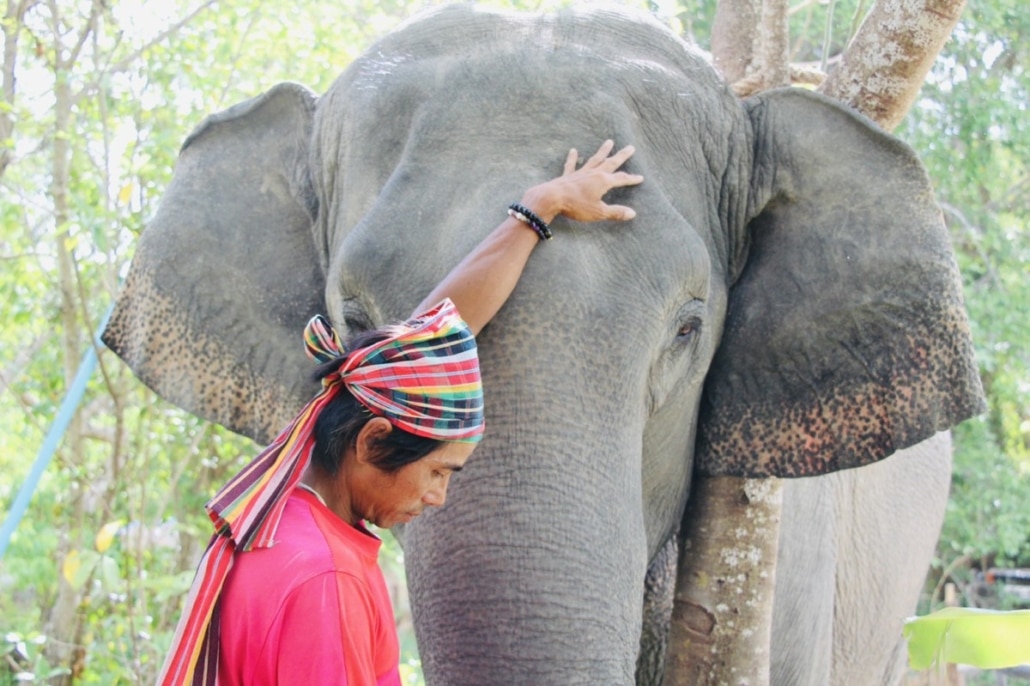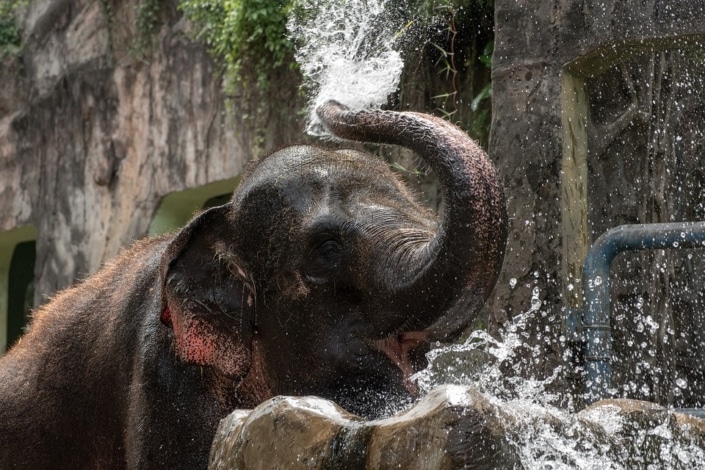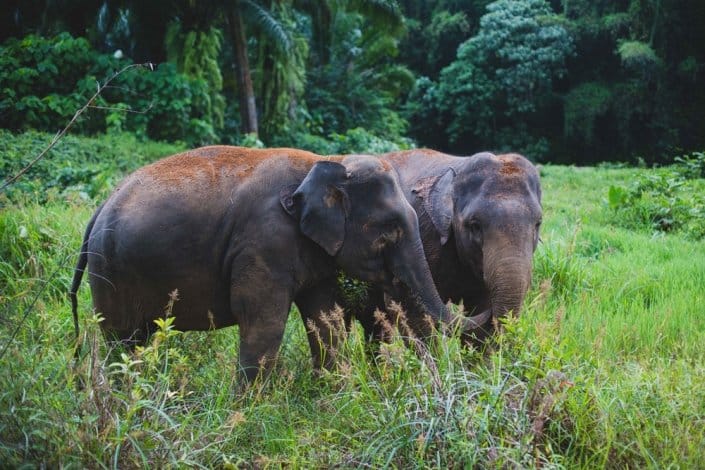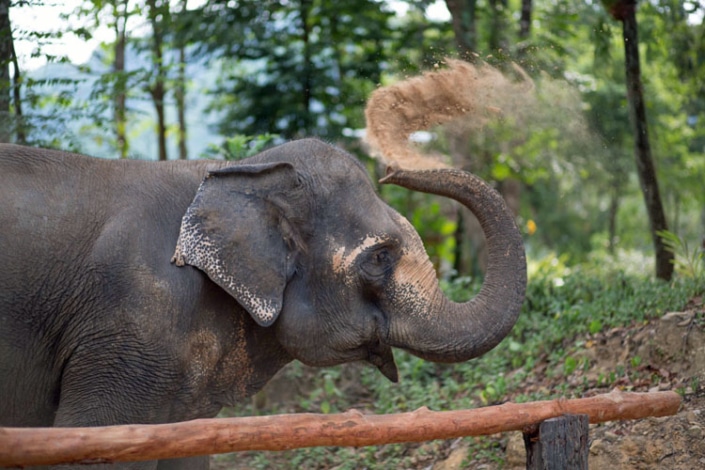Elephants have the biggest brains of all land animals
At 5 kg, the elephant brain has more mass than any other land animal. Most animal biologists regard elephants as one of the world’s most intelligent animals – on a par with great apes and dolphins.
It would seem that elephants are both doers and thinkers: we know, for example, that they make fly swats out of branches[1]. We also know that they protect other species and mourn their dead, but how good are they at general problem-solving?
An elephant’s brain has a well-developed front region and, from studies in other animals, we know this area of the brain is used for problem solving, but testing an elephant’s ability to solve problems presents some unique challenges.
• Elephants are so large; it is difficult to test them safely and ethically.
• The elephant’s unusual morphology (structure) is often a barrier to traditional experiments. Most of these experiments were designed for species with good eyesight and with paws or beaks for grabbing things.
• Many traditional experiments require behaviours which are unlike those used by wild elephants. Elephants may perform poorly because of behavioural tendencies, not a lack of skills.
Despite these challenges, elephants were shown to have the insight needed to use tools. For example, in a study [2] in which researchers suspended food out of an elephant’s reach, but gave the elephant a box, the elephant repeatedly pushed the box into position, stood on it and reached for the food. Chimpanzees behave similarly when given sticks to use to reach food, but when sticks were given to elephants, the experiment didn’t go well for them, possibly because they rely on their trunks for smelling and foraging, more so than for carrying things.
Another classic problem-solving test is the floating object task, in which a tasty treat is placed floating in a container of water. The test subject is supposed to add water to the container, until the treat floats high enough for the subject to reach. Humans understand this test once they are about five years old. Many primates and bird species have shown insight by solving this test easily. When elephants were tested, they appeared to lack insight into the task.[3] They learnt either through trial and error, or through guidance from keepers. However, once they had learned how to do the task, they remembered how to do it.
Where elephants may sometimes fail problem-solving tests in a research environment, in the wild they have their own unique problems which they learn to solve in their own way. For example, they dig holes with their trunks to find water. They also drop large rocks onto electric fences to break through them. It only takes one elephant to stumble upon a solution, before a whole herd can pick this up through social learning.
Find out more:
Yirka, B. (2011). Study shows elephants capable of insight. Available: https://phys.org/news/2011-08-elephants-capable-insight.html. Last accessed 22.11.21.
University of Wyoming. (2020). Asian elephants are capable of using water as a tool. Available: https://phys.org/news/2020-08-asian-elephants-capable-tool.html. Last accessed 22.11.21.
References:
[1] Hart, B.L et al. (2001). Cognitive behaviour in Asian elephants: use and modification of branches for fly switching. Animal Behaviour. 62 (5), 839-847.
[2] Foerder, P et al. (2011). Insightful Problem Solving in an Asian Elephant. PLoS ONE. 6 (8), e23251.
[3] Barrett, L.P & Benson-Amram, S. (2020). Can Asian Elephants Use Water as a Tool in the Floating Object Task?. Animal Behaviour and Cognition. 7 (3), 310-326.
[Click on photos below to enlarge and to read captions]






